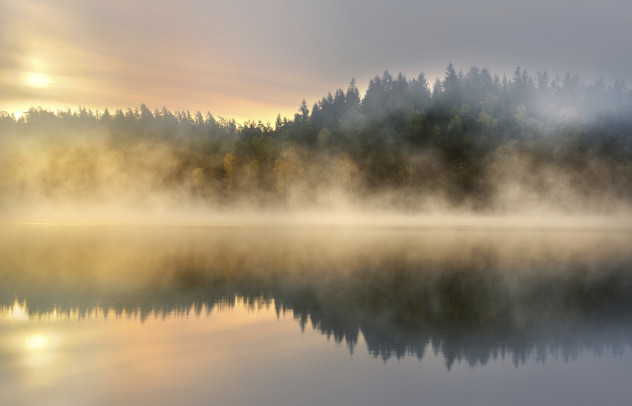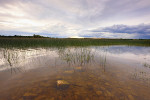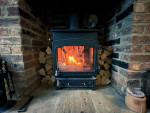Winterize your holiday home in Sweden: protection & security
Lennart Beck, Thursday, 27 July 2023

A holiday home in Sweden is a wonderful retreat to enjoy nature and tranquility. However, the Swedish winter can be very harsh. Therefore, it is important to winterize the holiday home to avoid damage and ensure safety. In this article, you will learn how you can winterize your holiday home in Sweden. We will cover the following topics:
1. Insulating the pipes
To protect the pipes from freezing, they should be well insulated. Use suitable insulation material such as foam or glass wool for this. Make sure that the insulation is installed in all exposed places, such as in the basement or outdoors.
2. Turning off and draining the water line
Turn off the water and drain the pipes to minimize the risk of frost damage. To do this, open all faucets and let the water run out. Also remember to drain the toilet and water heater.
3. Using antifreeze
Pour antifreeze into drains, toilets, and siphons to prevent water from freezing in the pipes.
4. Heating and frost monitors
Make sure that the heating works properly and equip the holiday home with frost monitors. These devices switch on automatically when the temperature falls below a certain value, thus preventing pipes and lines from freezing.
5. Arrangement with neighbors
Inform your neighbors about your absence and ask them to check regularly. You can also agree that they check the holiday home in case of a winter storm or other severe weather.
6. Ventilation against condensation and mold formation
Ventilate the house regularly to prevent condensation and mold formation. Also ensure that moisture has no chance to accumulate in closed rooms.
7. Preparation for winter storms
Secure loose items outdoors and check whether the roof, windows, and doors are adequately protected against storm and snow.
8. Checking the insurance policy
Make sure that your insurance policy provides adequate protection and covers all possible winter hazards.
9. Clothing and bedding
Remove all clothes and bedding from the holiday home or store them in airtight containers to protect them from moisture and pests.
10. Setting up mouse traps
Place mouse traps in various areas of the house to keep rodents away and avoid possible damage.
11. Furniture
Move furniture away from the floor and outer walls to prevent mold formation and damage from moisture. Cover the furniture with protective films to protect them from dust and dirt.
12. Cleaning gutters
Clean the gutters of leaves and dirt to ensure proper water drainage and avoid possible water damage.
13. Keeping snow removal tools handy
Make sure you have snow shovels, grit, and possibly a snow blower available to combat snow and ice formation in the access area of the house.
14. Storing garden furniture and equipment
Store garden furniture and garden tools in a protected space or cover them to protect them from weather conditions.
15. Checking smoke detectors and CO detectors
Check all smoke detectors and carbon monoxide detectors in the house and replace the batteries if necessary.
16. Checking supplies
Make sure that you have enough long-lasting food, water, and fuels (like firewood or gas bottles) in the house in case you want to use the house during the winter or in case of a sudden onset of winter.
17. Emergency equipment
Prepare an emergency kit that includes a flashlight, batteries, candles, matches, a first aid kit, a blanket, and a battery-powered radio.
18. Leaving contact details
Leave your contact details in the holiday home so that you can be contacted quickly in case of a problem. This can also be helpful if you hire a local caretaker service to take care of your holiday home.
Winterizing a holiday home in Sweden is essential to protect it from the challenges of winter. By following the measures mentioned above, you ensure that your holiday home is well protected and that you will find it in perfect condition again next spring. It is also advisable to regularly check on your holiday home or have someone nearby to do it for you. This way, you can identify and fix any problems in a timely manner.

A holiday home in Sweden is a wonderful retreat to enjoy nature and tranquility. However, the Swedish winter can be very harsh. Therefore, it is important to winterize the holiday home to avoid damage and ensure safety. In this article, you will learn how you can winterize your holiday home in Sweden. We will cover the following topics:
1. Insulating the pipes
To protect the pipes from freezing, they should be well insulated. Use suitable insulation material such as foam or glass wool for this. Make sure that the insulation is installed in all exposed places, such as in the basement or outdoors.
2. Turning off and draining the water line
Turn off the water and drain the pipes to minimize the risk of frost damage. To do this, open all faucets and let the water run out. Also remember to drain the toilet and water heater.
3. Using antifreeze
Pour antifreeze into drains, toilets, and siphons to prevent water from freezing in the pipes.
4. Heating and frost monitors
Make sure that the heating works properly and equip the holiday home with frost monitors. These devices switch on automatically when the temperature falls below a certain value, thus preventing pipes and lines from freezing.
5. Arrangement with neighbors
Inform your neighbors about your absence and ask them to check regularly. You can also agree that they check the holiday home in case of a winter storm or other severe weather.
6. Ventilation against condensation and mold formation
Ventilate the house regularly to prevent condensation and mold formation. Also ensure that moisture has no chance to accumulate in closed rooms.
7. Preparation for winter storms
Secure loose items outdoors and check whether the roof, windows, and doors are adequately protected against storm and snow.
8. Checking the insurance policy
Make sure that your insurance policy provides adequate protection and covers all possible winter hazards.
9. Clothing and bedding
Remove all clothes and bedding from the holiday home or store them in airtight containers to protect them from moisture and pests.
10. Setting up mouse traps
Place mouse traps in various areas of the house to keep rodents away and avoid possible damage.
11. Furniture
Move furniture away from the floor and outer walls to prevent mold formation and damage from moisture. Cover the furniture with protective films to protect them from dust and dirt.
12. Cleaning gutters
Clean the gutters of leaves and dirt to ensure proper water drainage and avoid possible water damage.
13. Keeping snow removal tools handy
Make sure you have snow shovels, grit, and possibly a snow blower available to combat snow and ice formation in the access area of the house.
14. Storing garden furniture and equipment
Store garden furniture and garden tools in a protected space or cover them to protect them from weather conditions.
15. Checking smoke detectors and CO detectors
Check all smoke detectors and carbon monoxide detectors in the house and replace the batteries if necessary.
16. Checking supplies
Make sure that you have enough long-lasting food, water, and fuels (like firewood or gas bottles) in the house in case you want to use the house during the winter or in case of a sudden onset of winter.
17. Emergency equipment
Prepare an emergency kit that includes a flashlight, batteries, candles, matches, a first aid kit, a blanket, and a battery-powered radio.
18. Leaving contact details
Leave your contact details in the holiday home so that you can be contacted quickly in case of a problem. This can also be helpful if you hire a local caretaker service to take care of your holiday home.
Winterizing a holiday home in Sweden is essential to protect it from the challenges of winter. By following the measures mentioned above, you ensure that your holiday home is well protected and that you will find it in perfect condition again next spring. It is also advisable to regularly check on your holiday home or have someone nearby to do it for you. This way, you can identify and fix any problems in a timely manner.

Search for houses and real estate in Sweden. Holiday homes and farms for sale in Sweden : Skåne, Blekinge, Halland, Kronoberg, Kalmar and Jönköping.
 Research different heating methods for your second home in Sweden: from electric heating to pellet systems and heat pumps to solar energy. We discuss
the pros and cons of each method, cost, energy efficiency, and the availability of government subsidies. Read our comprehensive guide now!
Research different heating methods for your second home in Sweden: from electric heating to pellet systems and heat pumps to solar energy. We discuss
the pros and cons of each method, cost, energy efficiency, and the availability of government subsidies. Read our comprehensive guide now!
More articles